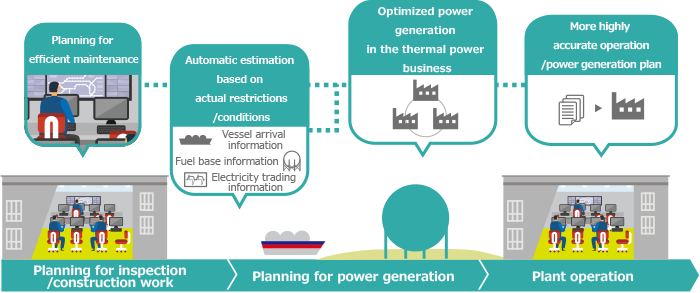IOT Data Collection For Power Plants


R&D Corner
-
IoT platforms are important for power plants, such as electric and wind power plants, because they enable the collection, analysis, and visualization of data on the operation and performance of the power plant. This data can be used to optimize the operations of the power plant, improve its energy efficiency and environmental performance, and enhance its safety and security.
Some specific ways that the collected data can be used include:
- Monitoring and optimization of power generation and consumption: By collecting data on the energy generation and consumption of a power plant, operators can identify opportunities for improving the efficiency and performance of the plant, and can take actions to optimize its operation.
- Environmental monitoring and compliance: By collecting data on the environmental impacts of a power plant, such as emissions of greenhouse gases and other pollutants, operators can ensure that the plant is operating in compliance with environmental regulations and standards.
- Predictive maintenance and equipment optimization: By collecting data on the performance and condition of equipment within a power plant, operators can predict when maintenance or repair may be needed, and can optimize the operation of the equipment to maximize its lifespan and performance.
- Safety and security monitoring: By collecting data on the safety and security of a power plant, operators can identify potential hazards and take actions to mitigate risks and ensure the safety of the plant and its personnel.
Overall, the use of IoT platforms and the collection of data from power plants can help operators to optimize their operations, improve their efficiency and environmental performance, and enhance the safety and security of their facilities.
There are several types of data that can be collected from an electric power plant using IoT technology. Some examples include:
- Energy production and consumption data: This could include data on the amount of electricity being generated by the power plant, as well as data on the energy consumption of various equipment and systems within the power plant.
- Environmental data: This could include data on air and water quality, as well as data on the emissions of greenhouse gases and other pollutants from the power plant.
- Operational data: This could include data on the performance and efficiency of various equipment and systems within the power plant, as well as data on maintenance and repair activities.
- Safety data: This could include data on the safety and security of the power plant, such as data on alarms, fire suppression systems, and emergency response procedures.
By collecting and analyzing this data, power plants can optimize their operations, improve their energy efficiency, reduce their environmental impacts, and enhance the safety and security of their facilities.
Here is an example payload that could be used to collect data from an electric power plant using an IoT device:
{
"timestamp": "2022-12-20T12:00:00Z",
"powerPlantId": "P12345",
"location": "Seattle, WA",
"energyGenerated": 100000,
"energyConsumed": 50000,
"co2Emissions": 10000,
"airQualityIndex": 70,
"waterQualityIndex": 90,
"equipmentEfficiency": 0.95,
"maintenanceStatus": "up-to-date",
"alarmStatus": "normal"
}This payload includes data on the power plant identifier, location, energy generated, energy consumed, CO2 emissions, air and water quality indices, equipment efficiency, maintenance status, and alarm status. This data could be used to monitor and optimize the performance and environmental impacts of the power plant, as well as to enhance safety and security.
Similar data can be collected from wind power plants using IoT technology. Wind power plants typically generate electricity by using wind turbines to convert the kinetic energy of the wind into electricity. IoT devices can be used to collect data on the operation and performance of wind turbines, as well as on the environmental impacts and safety of wind power plants.
Here is an example payload that could be used to collect data from a wind power plant using an IoT device:
{
"timestamp": "2022-12-20T12:00:00Z",
"windFarmId": "W12345",
"location": "San Francisco, CA",
"windSpeed": 10,
"energyGenerated": 10000,
"co2Emissions": 0,
"noiseLevel": 50,
"bladeCondition": "good",
"maintenanceStatus": "up-to-date",
"alarmStatus": "normal"
}This payload includes data on the wind farm identifier, location, wind speed, energy generated, CO2 emissions, noise level, blade condition, maintenance status, and alarm status. This data could be used to optimize the performance and efficiency of the wind turbines, as well as to monitor the environmental impacts and safety of the wind power plant.
In addition to collecting data on individual wind turbines, IoT devices can also be used to collect data on the grid connection and integration of wind power plants. This could include data on the amount of electricity being injected into the grid by the wind power plant, as well as data on the stability and reliability of the grid connection. By collecting and analyzing this data, wind power plants can optimize their operations and improve their integration with the grid.
